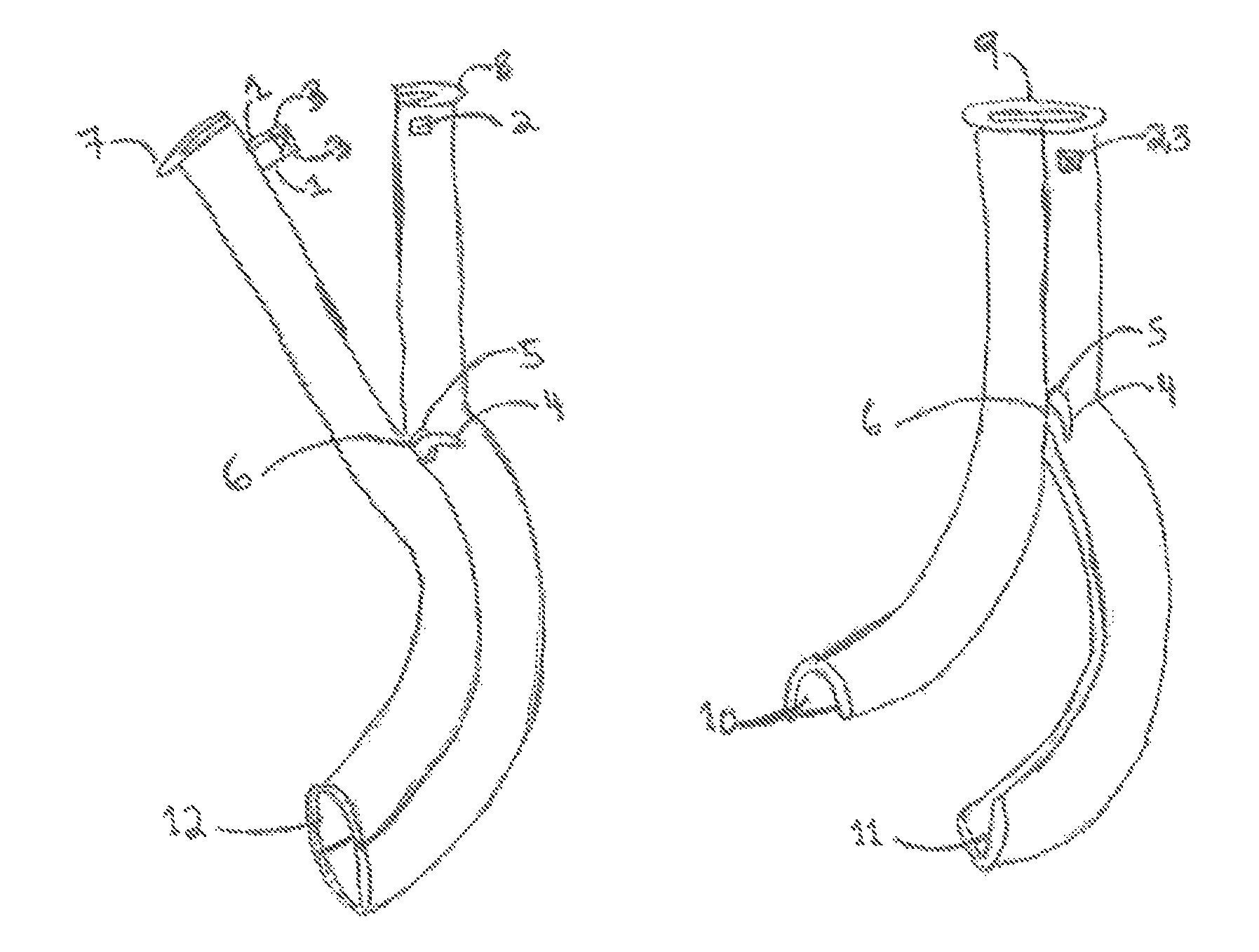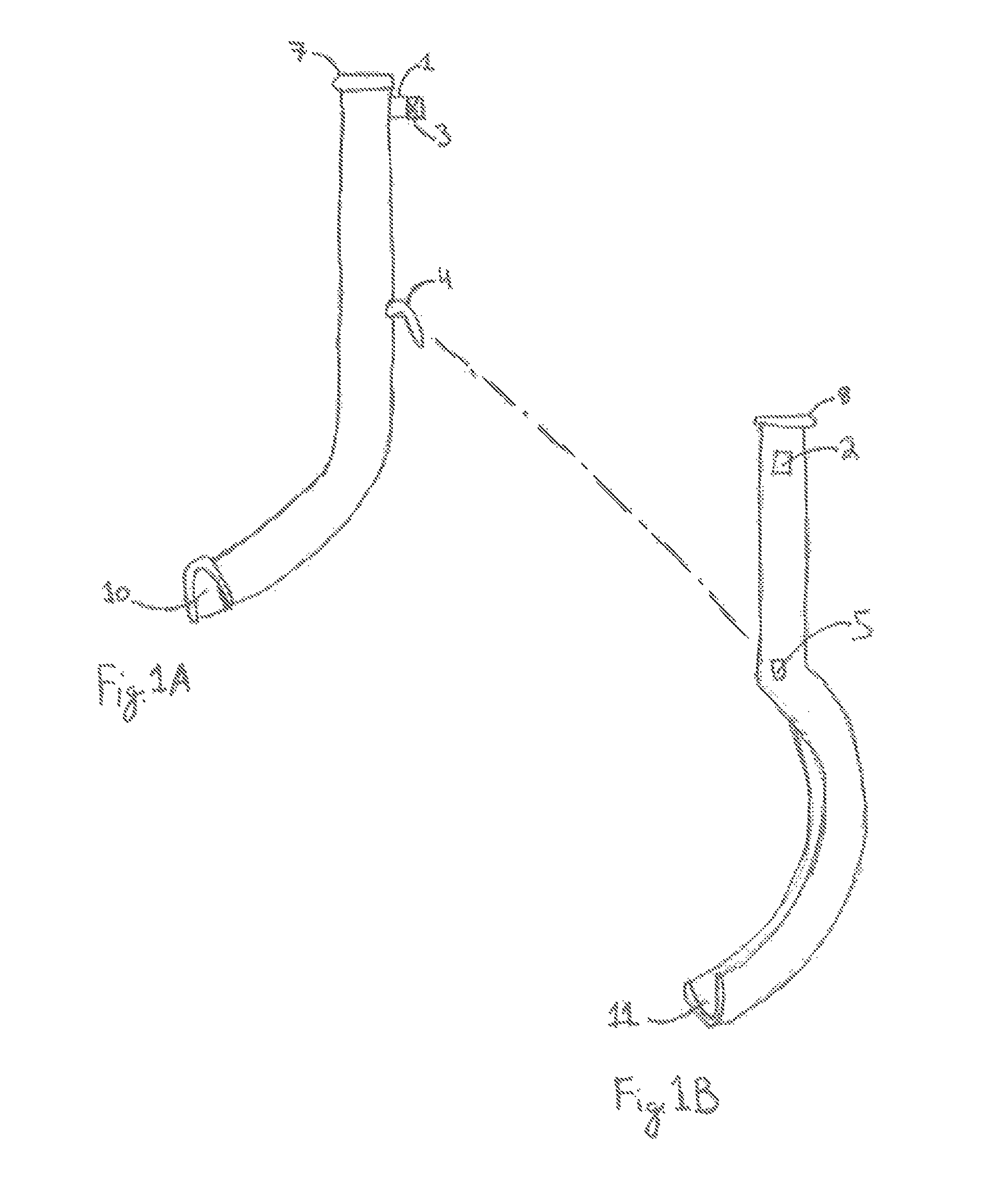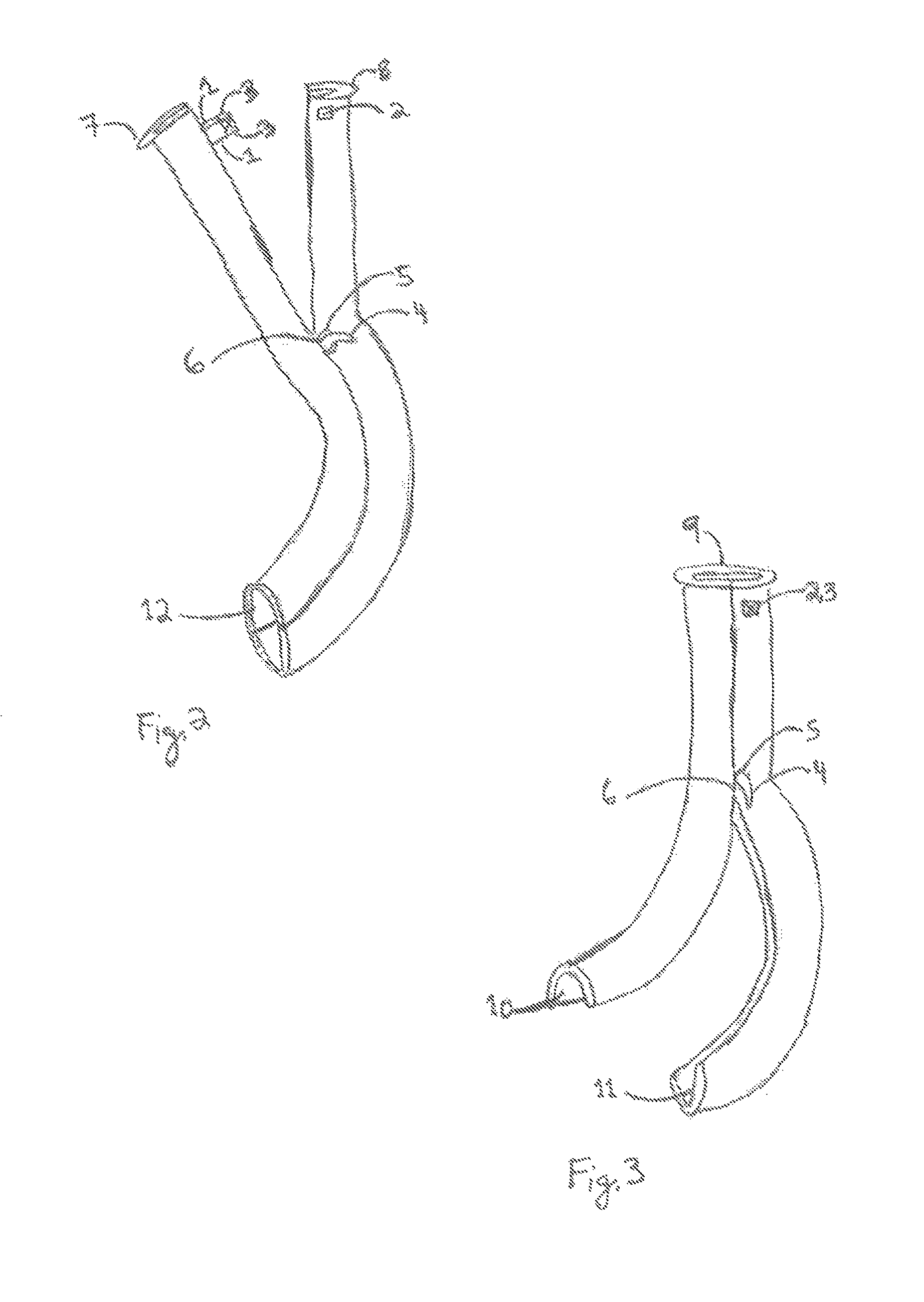Articulated oral airway
a technology of oral airway and articulation, which is applied in the field of anesthesiology, can solve the problems of inability to permit the passage of an ett through the lumen, and the risk of inadvertent repositioning of the tube,
- Summary
- Abstract
- Description
- Claims
- Application Information
AI Technical Summary
Benefits of technology
Problems solved by technology
Method used
Image
Examples
first embodiment
[0047]The manner of using the articulating oral airway begins with articulation of Parts A and B in the Open position (FIG. 2). This is accomplished by placing the articulating hooks 4 in the articulating hook receptacles 5. When this is done the device will be aligned to form an ovoid distal lumen 12. In this conformation the device is advanced into the oropharynx until resistance is felt. The point at which resistance is felt is typically when the articulating hook receptacles 5 reach the level of the teeth. At this point the lip abutments of Parts A and B are brought together as the device is inserted further. With the lip abutments 7 / 8 approximated the device will latch and stay in the Closed position (FIG. 3) as described above. In the Closed position the distal ends of the device will be separated with Part A displacing the tongue anteriorly, stenting open the oropharynx. Insertion is complete when the lip abutments abut the lips. Through the now formed proximal lumen an airwa...
second embodiment
[0049]The manner of using the Second Embodiment of articulating oral airway is identical to the First Embodiment with the following difference: With the device inserted, the oropharynx is now stented open and ventilation may be performed via a mask placed over the airway.
FIGS. 5 through 7
Third Embodiment
[0050]This embodiment of the invention is identical to the First Embodiment except the following difference: The latch tabs 1 and latch tab receptacles 2 are replaced with opposing magnets 13. When in the Closed position these magnets will serve the purpose of the latch tabs / latch tabs receptacles of the First Embodiment for keeping the device in the Closed position.
Operation
third embodiment
[0051]The manner of using this embodiment of the articulating oral airway is identical to the First Embodiment except for the following: When in the Closed position the magnets 13 of Part A and B hold the device in the Closed position. To remove the device the magnetic seal is broken by pulling the magnets / lip abutments apart. With the lip abutments 7 / 8 separated, the device returns to the Open position. From the Open position the articulating hooks are removed from the articulating hook receptacles and the device is separated into its component parts (Parts A and B) and removed from the mouth.
FIGS. 8 through 10
Fourth Embodiment
[0052]This embodiment of the invention is identical to the First Embodiment except the following difference: The articulating hook receptacles 5 are replaced with articulating hook bars 14 on either side of Part B. When joining Parts A and B together these bars will serve the purpose of the articulating hook receptacles of the First Embodiment as the point of...
PUM
 Login to View More
Login to View More Abstract
Description
Claims
Application Information
 Login to View More
Login to View More - Generate Ideas
- Intellectual Property
- Life Sciences
- Materials
- Tech Scout
- Unparalleled Data Quality
- Higher Quality Content
- 60% Fewer Hallucinations
Browse by: Latest US Patents, China's latest patents, Technical Efficacy Thesaurus, Application Domain, Technology Topic, Popular Technical Reports.
© 2025 PatSnap. All rights reserved.Legal|Privacy policy|Modern Slavery Act Transparency Statement|Sitemap|About US| Contact US: help@patsnap.com



